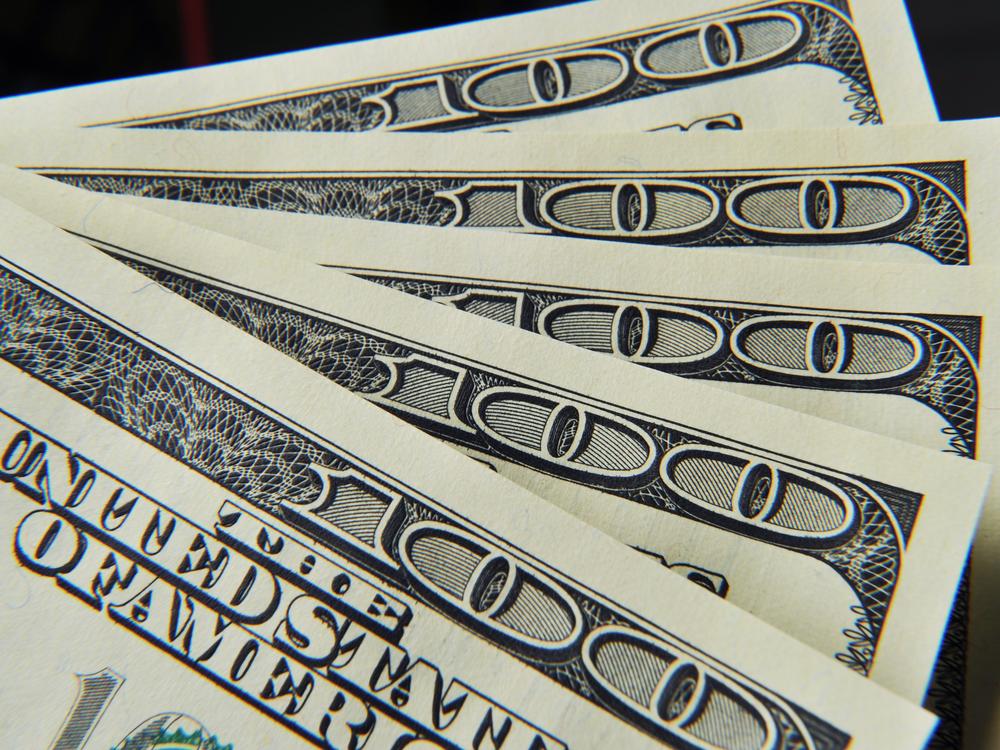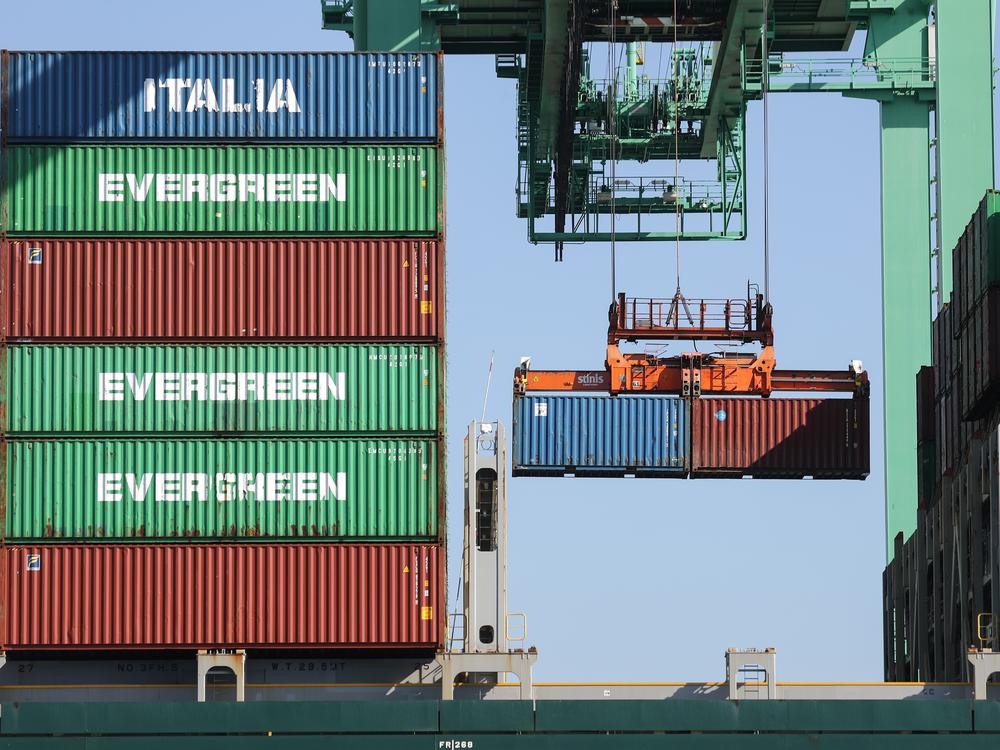Section Branding
Header Content
A strong dollar is great news for most of us — but not everybody is a winner
Primary Content
The American dollar has been soaring this year relative to most currencies in the world. That's providing a lot of benefits to Americans — but it's also creating a lot of pain.
The strong dollar brings a number of advantages. It reinforces America’s economic dominance and it helps reduce inflation by making imports cheaper.
But a rising dollar doesn’t lift all boats. Some exporters have been hit as the stronger domestic currency makes them less competitive in overseas markets, while also creating economic headaches around the world.
Here are three things to know about the dollar – and its rally this year.
What's behind the strong dollar — and will it last?
A solid dollar signifies a strong economy. And the U.S. economy has proven relatively strong and stable, certainly compared to other countries that are growing more slowly.
The U.S. dollar index, which measures the greenback against a basket of currencies of major trading partners, is up nearly 4% this year despite falling in May and experiencing some volatility along the way.
For the dollar, the gains mark quite a comeback. The greenback had soared in 2022 to its highest in around two decades, but slipped a little last year.
Interest rates are playing a part too. The Federal Reserve continues to maintain relatively high interest rates compared to U.S trading partners, like Japan and Europe.
Higher interest rates traditionally push up a currency's value. One big reason is that they tend to attract more foreign investors into the country’s debt markets. For instance, a Japanese investor looking to buy U.S. government bonds would have to buy dollars to invest in this country.
And at the moment, the Fed appears in no hurry to start cutting interest rates after raising them to their highest level in more than two decades.
By contrast, other major economies have started lowering their interest rates. In fact, Canada cut its interest rate on Wednesday, becoming the first G7 nation to do so. The European Central Bank followed on Thursday by cutting key rates.
Many analysts expect the dollar to weaken later this year. Just how much will depend on how many rate cuts the Fed actually delivers.
A recent poll of market strategists conducted by Reuters predicts only a modest decline in the dollar.
So who benefits?
Simply put, almost everybody in the country.
A key benefit of a stronger dollar is that it lowers the cost of importing stuff. That’s a big deal for the U.S., a country that imports more than it exports.
And it’s not just the millions of shoppers buying cheap Chinese-made items from Walmart and Amazon. American companies benefit because they need to import things too, like raw materials or components, for manufacturing and production.
Lower import costs help to counter inflation. And that's especially helpful now when inflation remains one of the biggest challenges for the U.S. economy.
Although inflation has come down significantly since hitting a four-decade high in 2022, it’s still above the Fed’s 2% inflation target.
“If you ask any American what's bothering them the most about the economy it’s that they're paying more for all kinds of things, goods and services,” says Mark Zandi, the chief economist at Moody’s Analytics. “So the number one issue here is inflation. We've got to rein that in. And one way of doing that is to have a strong dollar.”
The strong dollar also benefits Americans traveling abroad, especially to countries that have seen their currencies weaken the most against the U.S. dollar.
Take Japan. The yen has fallen to a 30-plus-year low against the dollar. American visitors have flocked there to take advantage of the resulting low prices, according to Japan's tourism agency.
Not only is traveling abroad cheaper, it’s also allowing Americans to snag luxury handbags and clothing in places like Europe at much lower prices than in the U.S., as well as making fancy meals and upscale hotels more affordable.
Then there's the pride factor. A strong dollar reinforces the U.S.'s economic dominance as the world’s most important currency.
And who gets hurt?
The soaring U.S. dollar may provide big benefits to many Americans, but not everybody comes out a winner.
It can hurt domestic manufacturers.
Take Drew Greenblatt. He owns Marlin Steel Wire Products in Baltimore, which exports products like baskets and racks to other countries.
Greenblatt says his company has “easily” lost more than $4 million a year in sales of exports because his products are not as competitive in markets overseas.
The strong dollar also means he can’t hire as many people as he would like.
“I could hire more unemployed Baltimore City people that are right now in poverty,” he says. “I could pull them up into the middle class if I had more orders.”
Greenblatt is being hurt even more because he only uses American steel.
Quantifying the exact impact of a strong dollar on American exporters is tough. Economists agree that manufacturers are suffering because of the strong dollar, but also note the sector is more resilient to currency pressures and high interest rates than in previous devastating periods like in the early 1980s.
"They're not booming, but they're holding their own," says Zandi of American manufacturers.
Other companies are able to offset the hit to their exports by paying less for importing materials or components they need for their production
American companies who manufacture abroad can also feel the sting. For multinational corporations, like Apple which have many overseas operations, the strong dollar can prove costly when converting local foreign currencies back into U.S. dollars.
Beyond hurting U.S. companies, the strong dollar can wreak havoc around the world.
While foreign countries can benefit from exporting goods more cheaply to the U.S., they pay a price because imports into their own countries become more expensive too.
Japan and South Korea, two major trading partners with the U.S., have expressed “serious concerns” about the depreciation in their currencies even if both nations are major exporters.
And then there are the emerging economies that have borrowed in U.S. dollars. They suffer as well. Paying back the interest on their debts becomes costlier since they need to buy more dollars to repay investors. Those dollars cost more when the greenback strengthens — and as the debt mounts so do the costs.
So the strong dollar may benefit many Americans, but when it comes to currencies, not everybody can come out a winner whether abroad or at home.




